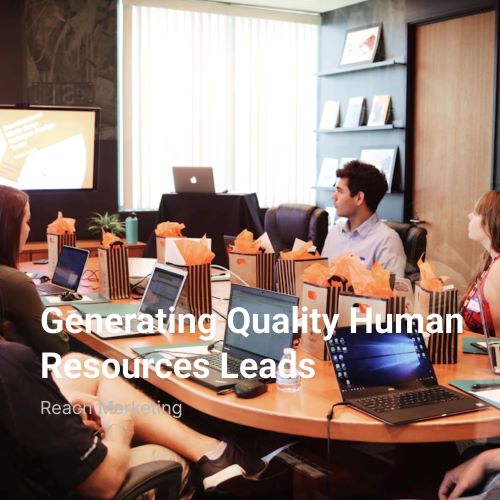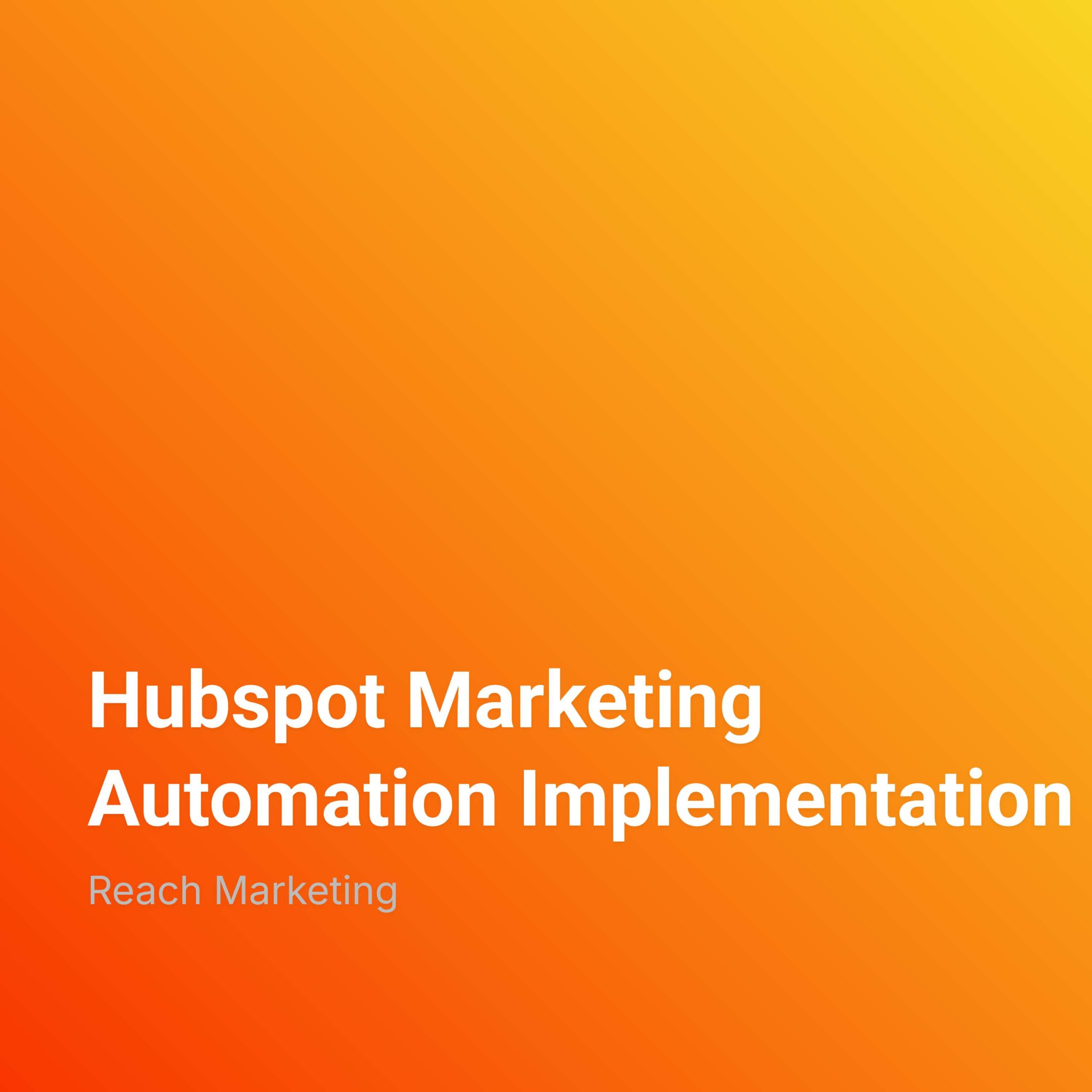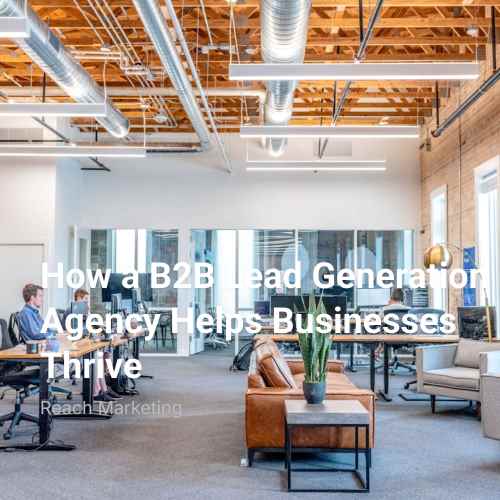
B2B lead generation has emerged as a critical driver for companies aiming to expand their reach and secure high-value customers. As markets become increasingly competitive, organizations must leverage sophisticated strategies and advanced technologies to maintain an edge. Reach Marketing, a leading agency specializing in B2B lead generation, offers innovative solutions that enable businesses to unlock growth opportunities and drive long-term success.
Why B2B Lead Generation Matters
In contrast to B2C marketing, where the focus is on acquiring large volumes of low-cost customers, B2B lead generation emphasizes building long-term partnerships with high-value prospects. The goal isn’t just to fill the pipeline but to generate qualified leads that convert into profitable, enduring customer relationships.
Key Benefits of Effective B2B Lead Generation
| Benefit | Description |
| Increased Sales Opportunities | Targeted strategies ensure a consistent flow of qualified leads, boosting conversion rates. |
| Stronger Customer Relationships | Personalization builds trust and fosters long-term client loyalty. |
| Data-Driven Decision-Making | Real-time insights help businesses refine their marketing strategies effectively. |
| Higher ROI | Targeted campaigns reduce wasted resources and increase returns on investment. |
Additional Benefits Include:
- Improved Lead Quality: Precise targeting reduces the number of unqualified leads.
- Shortened Sales Cycles: With accurate lead scoring, sales teams can prioritize the most promising opportunities, speeding up deal closures.
- Enhanced Competitive Advantage: Businesses that adopt advanced lead generation strategies stay ahead of slower-moving competitors.
Top B2B Lead Generation Service Providers
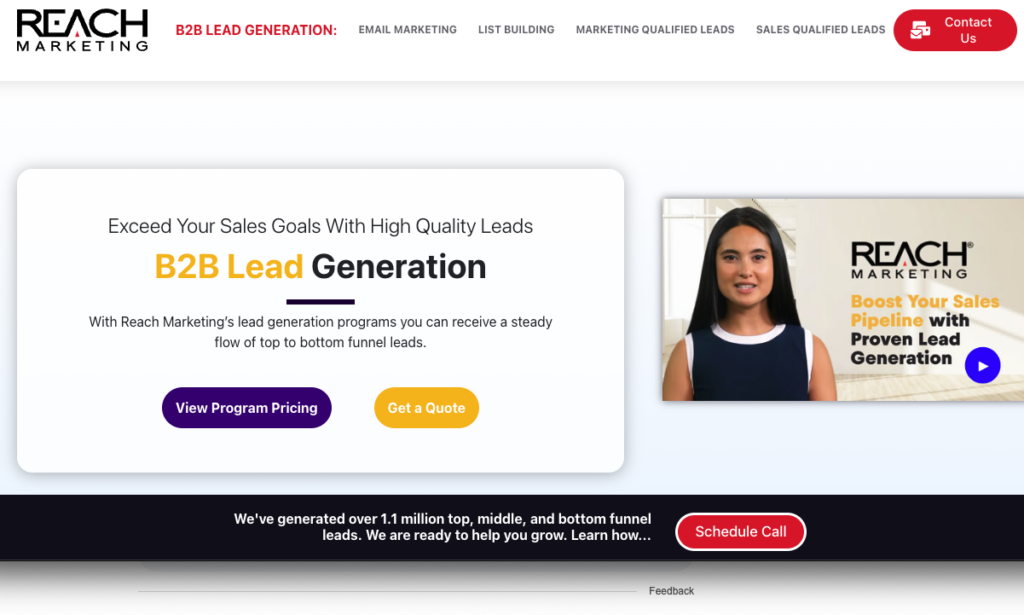
1. Reach Marketing
Category: Agency & Software
Reach Marketing excels in providing B2B lead generation services, helping businesses streamline their marketing processes and boost conversion rates.
Key Features
- List Building & Data Solutions: Extensive services for creating targeted, segmented lead lists.
- Email Marketing Campaigns: Optimized email outreach to generate both Marketing Qualified Leads (MQLs) and Sales Qualified Leads (SQLs).
- Marketing Automation Consulting: Expertise in major platforms like Marketo, Pardot, and HubSpot to enhance automated workflows.
- Database Management & Integration: Custom solutions for maintaining clean, accurate, and integrated databases.
- Comprehensive Analytics: Actionable insights from performance reports to refine campaigns.
- Custom Application Development: Tailored marketing applications to support unique client needs.

2. Cognism
Category: Software
Cognism is a robust sales intelligence platform known for its reliable, GDPR-compliant data solutions.
Key Features
- Diamond Data®: Phone-verified mobile numbers for high accuracy in contact details.
- Bombora Intent Data: Identifies prospects actively looking for solutions in your industry.
- Browser Extension: Seamlessly integrates with LinkedIn and Sales Navigator for quick data access.
- Global Coverage: EMEA, NAM, and APAC-specific datasets.
- CRM Integrations: Works with Salesforce, HubSpot, and Outreach for efficient lead management.

3. ZoomInfo
Category: Software
ZoomInfo provides an extensive B2B database with advanced features to help businesses find, track, and engage potential leads.
Key Features
- Large Contact Database: Access to millions of verified B2B contacts across industries.
- Advanced Search: Customizable filters to zero in on specific industries, job titles, or company sizes.
- Intent Data: Real-time buyer intent signals to prioritize outreach.
- Website Visitor Tracking: Identifies anonymous visitors to your site and matches them with their contact info.
- Seamless CRM Integration: Direct syncing with leading CRMs.
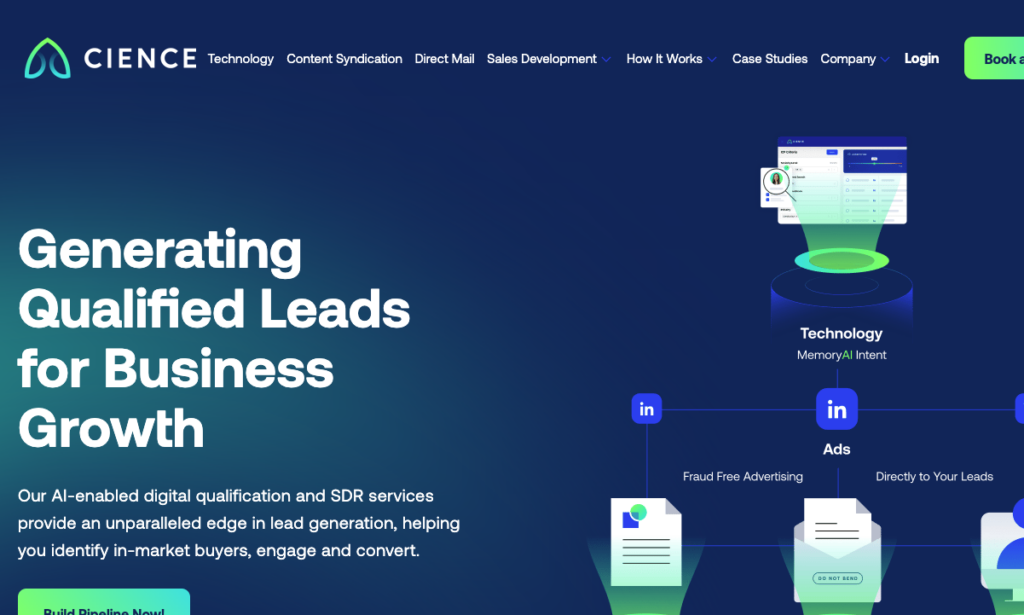
4. CIENCE
Category: Software & Agency
CIENCE blends human expertise with AI-driven tools to deliver personalized lead generation solutions.
Key Features
- End-to-End Prospecting: From identifying leads to appointment setting, CIENCE handles the entire process.
- Multi-Channel Outreach: Email, phone, and social media outreach for maximum engagement.
- Account-Based Marketing (ABM): Tailored strategies to target high-value accounts.
- Real-Time Analytics: Provides performance metrics to track ROI.
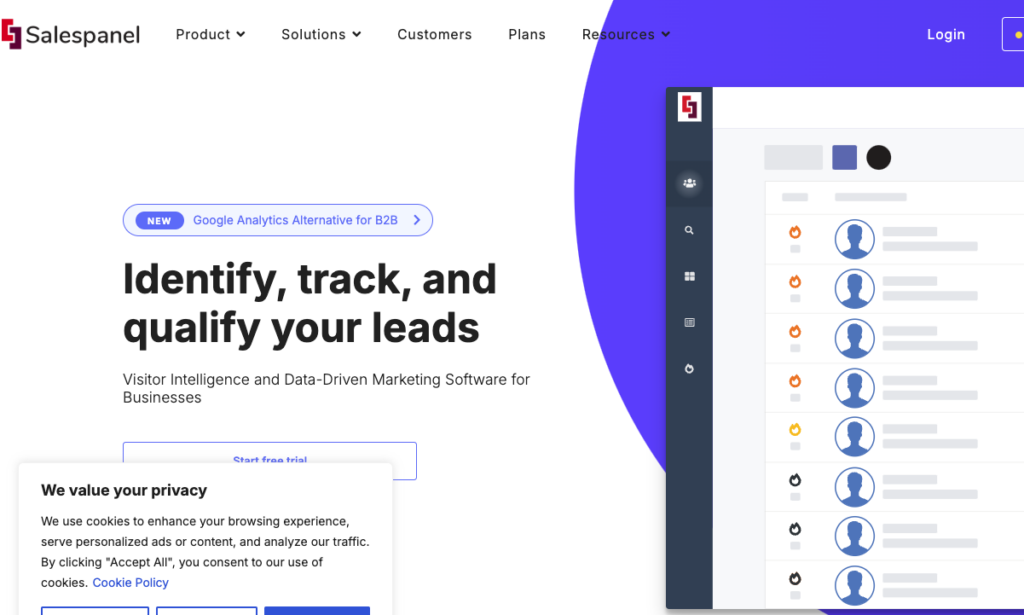
5. Salespanel
Category: Software
Salespanel focuses on capturing, tracking, and qualifying leads, making it ideal for businesses aiming to improve their conversion rates.
Key Features
- Lead Scoring: Ranks prospects based on their engagement and likelihood to convert.
- Visitor Journey Mapping: Tracks how leads interact with your website over time.
- Real-Time Notifications: Alerts your team when high-priority leads take action.
- CRM Integrations: Easy syncing with Salesforce and HubSpot.
6. LeadGeneration.com
Category: Agency
LeadGeneration.com offers customized multi-channel campaigns that drive both inbound and outbound leads.
Key Features
- Custom Campaign Creation: Tailored strategies based on client goals and industry.
- Landing Page Optimization: Builds high-converting pages to improve lead capture rates.
- SEO & Content Marketing: Organic traffic growth through search optimization.
- Multi-Channel Outreach: Uses email, social media, and telemarketing for comprehensive coverage.
7. Apollo.io
Category: Software
Apollo.io provides a one-stop solution for sales engagement, combining a powerful database with outreach tools.
Key Features
- Contact Database: Millions of verified B2B contacts.
- Automated Workflows: Simplifies outreach with email sequencing and task automation.
- AI Analytics: Delivers actionable insights based on campaign performance.
- Data Enrichment: Continuously updates contact information for accuracy.
8. LeadGenius
Category: Software
LeadGenius offers a combination of AI-powered tools and human researchers for precision in outbound lead generation.
Key Features
- Custom Data Collection: Builds personalized lead lists based on specific criteria.
- Email Verification: Ensures high deliverability with verified email addresses.
- CRM Integrations: Compatible with leading CRMs like Salesforce and HubSpot.
- Engagement Monitoring: Tracks how prospects interact with your outreach efforts.
9. Salesloft
Category: Software
Salesloft is a comprehensive platform for managing sales engagement, with tools designed to enhance productivity and close rates.
Key Features
- Sales Cadences: Create and manage multi-touchpoint cadences for consistent outreach.
- Personalized Email Templates: Helps sales teams send relevant, engaging emails.
- Meeting Scheduling: Built-in calendar integration for quick appointment setting.
- Analytics Dashboard: Tracks performance metrics such as open rates and response times.
10. Upcall
Category: Software
Upcall focuses on outbound call campaigns, making it ideal for businesses that rely on voice-based lead engagement.
Key Features
- Managed Call Campaigns: Their expert team handles outreach and follow-ups.
- Call Scripting: Provides proven scripts for effective communication.
- Real-Time Insights: Offers analytics on call performance to improve future campaigns.
- CRM Integration: Syncs results directly to your CRM for seamless follow-up.
11. Belkins
Category: Agency
Belkins is known for its hands-on approach to lead generation, offering tailored services across various verticals.
Key Features
- Appointment Setting: Schedules meetings with qualified leads for your sales team.
- Cold Email Outreach: Crafts and manages email campaigns to generate leads.
- CRM Consulting: Helps optimize your CRM setup for better lead management.
- LinkedIn Marketing: Engages prospects through LinkedIn outreach campaigns.

Benefits of Utilizing B2B Lead Generation Services
Engaging with B2B lead generation services offers several advantages:
- Access to Expertise: These companies specialize in lead generation and possess the expertise to identify and engage potential clients effectively.
- Time Efficiency: Outsourcing lead generation allows your sales team to focus on closing deals rather than sourcing leads.
- Scalability: Lead generation services can scale their efforts to match your business growth, ensuring a consistent flow of qualified leads.
- Multi-Channel Outreach: Utilizing various channels such as email, social media, and telemarketing increases the chances of reaching potential clients.
Marketing Automation: Scaling Lead Generation
One of the key challenges in lead generation is scalability. Without marketing automation, managing hundreds—or even thousands—of leads becomes impractical. Reach Marketing’s automation solutions streamline repetitive tasks, enabling businesses to scale without compromising on personalization.
Key Automation Features
- Lead Scoring: Assigns a score to each lead based on engagement and fit.
- Triggered Workflows: Automatically sends follow-up emails and alerts based on lead actions (e.g., downloading a white paper).
- Performance Tracking: Provides real-time metrics on the effectiveness of campaigns.
| Automation Benefit | Result |
| Faster Lead Nurturing | Prospects receive timely, relevant content without manual intervention. |
| Enhanced Personalization | Automated tools can still deliver tailored experiences based on lead behavior. |
| Increased Sales Efficiency | Sales teams focus on leads with the highest potential, improving productivity. |
Personalized Lead Scoring and Qualification
Effective lead generation requires prioritizing the right prospects. Not all leads are equal—some are ready to buy immediately, while others need further nurturing. Reach Marketing uses a sophisticated lead scoring model to ensure sales teams focus on high-priority opportunities.
How Lead Scoring Works
- Engagement Metrics: Assigns points based on actions such as opening emails, attending webinars, or visiting key web pages.
- Demographic Fit: Evaluates how closely the lead matches the ideal customer profile (ICP).
- Behavioral Triggers: Detects key buying signals, such as repeated visits to product pages.
| Lead Score Range | Action |
| 80-100 | Immediate sales follow-up |
| 50-79 | Ongoing nurturing |
| Below 50 | Low-priority or disqualified |

Advanced Technology in B2B Lead Generation
Technology has transformed how businesses approach B2B lead generation. From artificial intelligence to predictive analytics, cutting-edge tools are enhancing targeting, engagement, and conversion.
Notable Technologies Utilized by Reach Marketing
- Customer Relationship Management (CRM) Integration:
Ensures seamless data flow between marketing and sales, providing a unified view of the customer journey.
- AI-Powered Predictive Analytics:
Analyzes historical data to predict which prospects are most likely to convert.
- A/B Testing Tools:
Enables continuous campaign optimization by testing different subject lines, CTAs, and landing pages.
Measuring Success: Essential B2B Lead Generation Metrics
Success in B2B lead generation isn’t determined by lead volume alone—it’s about measurable business outcomes. Reach Marketing tracks critical KPIs to ensure that every campaign delivers value.
Key Metrics Include:
- Lead Conversion Rate: The percentage of leads that convert into paying customers.
- Cost Per Lead (CPL): Measures the efficiency of lead acquisition efforts.
- Sales Cycle Duration: The average time from initial contact to deal closure.
- Customer Lifetime Value (CLV): An estimate of the total revenue a customer will generate over their lifetime.
- Return on Investment (ROI): The ultimate measure of campaign profitability.
Deep Dive: The Key Pillars of High-Impact B2B Lead Generation
Effective B2B lead generation is more than just a process—it’s a carefully orchestrated strategy that integrates market research, data-driven targeting, personalized outreach, and continuous optimization. Each element plays a critical role in driving sustainable growth. Below, we examine the essential pillars that support high-impact B2B lead generation campaigns.
1. Market Research and Ideal Customer Profiling
Identifying the right audience is the foundation of any successful lead generation strategy. Without a clear understanding of who your ideal customer is, efforts may be wasted on low-value leads or prospects who are unlikely to convert.
Steps to Build an Ideal Customer Profile (ICP):
- Analyze Existing Customers:
- Identify top-performing accounts and look for common characteristics such as industry, company size, and geographic location.
- Assess key decision-makers involved in past sales.
- Gather Behavioral Data:
- Monitor website traffic patterns, content engagement, and purchasing behavior to better understand how prospects interact with your brand.
- Incorporate Firmographics and Technographics:
- Firmographics: Information about a company’s size, revenue, and industry.
- Technographics: Insights into the technology stack used by target companies.
- Segment by Pain Points:
- Understand the primary challenges your target audience faces and tailor messaging to address these specific pain points.
Example ICP Segmentation Table:
| Attribute | Segment A | Segment B | Segment C |
| Industry | SaaS | Manufacturing | Healthcare |
| Company Size | 50-200 employees | 200-500 employees | 500+ employees |
| Key Decision-Maker | CTO | Operations Director | Procurement Head |
| Primary Challenge | Scaling infrastructure | Reducing production costs | Improving procurement speed |
| Solution Focus | Cloud-based solutions | IoT integration | Supply chain optimization |
2. The Role of High-Quality Content in B2B Lead Generation
In B2B lead generation, content serves as both a hook and a nurturer. High-quality content demonstrates your expertise, educates potential buyers, and moves them further down the funnel.
Types of Content That Drive Engagement
- White Papers and eBooks:
Comprehensive guides that address specific industry challenges and offer in-depth solutions.
- Case Studies:
Real-life success stories that show how your product or service has solved similar problems for other companies.
- Webinars and Virtual Events:
Interactive formats that allow prospects to engage directly with your experts, ask questions, and gain insights.
- Blog Posts:
SEO-optimized articles that attract inbound traffic and showcase thought leadership.
- Infographics:
Visual representations of data or processes that can quickly convey complex information.
Content Funnel Strategy:
| Funnel Stage | Content Type | Objective |
| Top of Funnel (TOFU) | Blog posts, infographics | Attract and educate prospects |
| Middle of Funnel (MOFU) | White papers, case studies | Nurture leads, build trust |
| Bottom of Funnel (BOFU) | Webinars, product demos | Convert leads into customers |
3. Personalization at Scale
While personalization is often associated with one-to-one interactions, advanced marketing automation tools now enable businesses to deliver highly personalized experiences at scale. This is especially critical in B2B, where decision-making involves multiple stakeholders and long sales cycles.
Levels of Personalization:
- Email Personalization:
- Use recipient names, company names, and specific pain points in email campaigns.
- Dynamic email templates can tailor content based on lead segments.
- Website Personalization:
- Implement dynamic website elements that change based on visitor profiles (e.g., industry-specific case studies).
- Use chatbots to offer personalized recommendations.
- Content Recommendations:
- Offer tailored content suggestions based on previous interactions, such as “recommended next articles” or “other resources you may find helpful.”
Personalization Tools and Platforms:
| Tool | Function |
| HubSpot | Marketing automation and CRM integration |
| Marketo | Lead management and multi-channel personalization |
| Drift | Conversational marketing and chatbot automation |
| Clearbit | Real-time data enrichment for personalization |
4. Multi-Touch Attribution and Advanced Analytics
Modern B2B lead generation involves multiple touchpoints across different channels. Multi-touch attribution models help businesses understand which touchpoints contribute the most to lead conversion, enabling more informed decisions about budget allocation and campaign optimization.
Common Attribution Models:
- First-Touch Attribution:
Attributes 100% of the credit to the first interaction a prospect has with your brand.
- Last-Touch Attribution:
Assigns all credit to the final touchpoint before conversion.
- Linear Attribution:
Distributes credit equally across all touchpoints.
- Time-Decay Attribution:
Assigns more credit to interactions closer to the conversion point.
Sample Attribution Analysis:
| Channel | First-Touch Contribution | Last-Touch Contribution | Linear Contribution |
| Paid Search | 30% | 10% | 20% |
| Organic Search | 20% | 30% | 25% |
| Email Campaign | 10% | 40% | 25% |
| Social Media | 40% | 20% | 30% |
5. Advanced Lead Scoring Techniques
Lead scoring is critical for identifying high-priority leads and ensuring sales teams focus on prospects most likely to convert. While basic lead scoring models assign points based on predefined criteria, advanced models incorporate machine learning to improve accuracy over time.
Factors Influencing Lead Scores:
- Demographic Fit:
How well the lead matches your ICP (e.g., job title, company size).
- Engagement Level:
Actions such as email opens, content downloads, and event attendance.
- Behavioral Triggers:
Key activities that indicate buying intent, such as viewing pricing pages or product demos.
- Sales Readiness:
Signals that the lead is ready for a conversation, such as filling out a contact form.
Predictive Lead Scoring Example:
| Lead | Demographic Fit Score | Engagement Score | Behavioral Trigger | Total Score |
| Lead A | 80 | 70 | Yes | 95 |
| Lead B | 60 | 80 | No | 75 |
| Lead C | 90 | 60 | Yes | 85 |
6. The Impact of AI and Machine Learning on B2B Lead Generation
AI and machine learning are transforming B2B lead generation by automating processes, improving targeting accuracy, and delivering real-time insights. Companies leveraging AI-driven tools can gain a significant competitive edge.
Key Applications of AI in Lead Generation:
- Predictive Analytics:
- Forecast which leads are most likely to convert based on historical data.
- Chatbot Automation:
- Engage prospects in real-time and qualify leads without human intervention.
- Content Optimization:
- Use AI to analyze which types of content perform best and recommend improvements.
- Sales Forecasting:
- Provide sales teams with accurate predictions about future revenue based on current pipeline data.
7. Building Long-Term Relationships Through Account-Based Marketing (ABM)
Account-Based Marketing (ABM) is a highly targeted approach that focuses on specific high-value accounts. Instead of casting a wide net, ABM involves creating tailored campaigns for a small set of strategic accounts.
ABM Strategy Framework:
- Identify Target Accounts:
- Select high-value accounts based on revenue potential and strategic fit.
- Develop Account Insights:
- Gather detailed information about each target account’s structure, challenges, and goals.
- Personalize Outreach:
- Create customized content, messaging, and offers for each account.
- Measure Results:
- Track engagement, pipeline growth, and revenue impact for each targeted account.
Benefits of ABM:
- Higher deal sizes
- Better alignment between sales and marketing
- Improved win rates
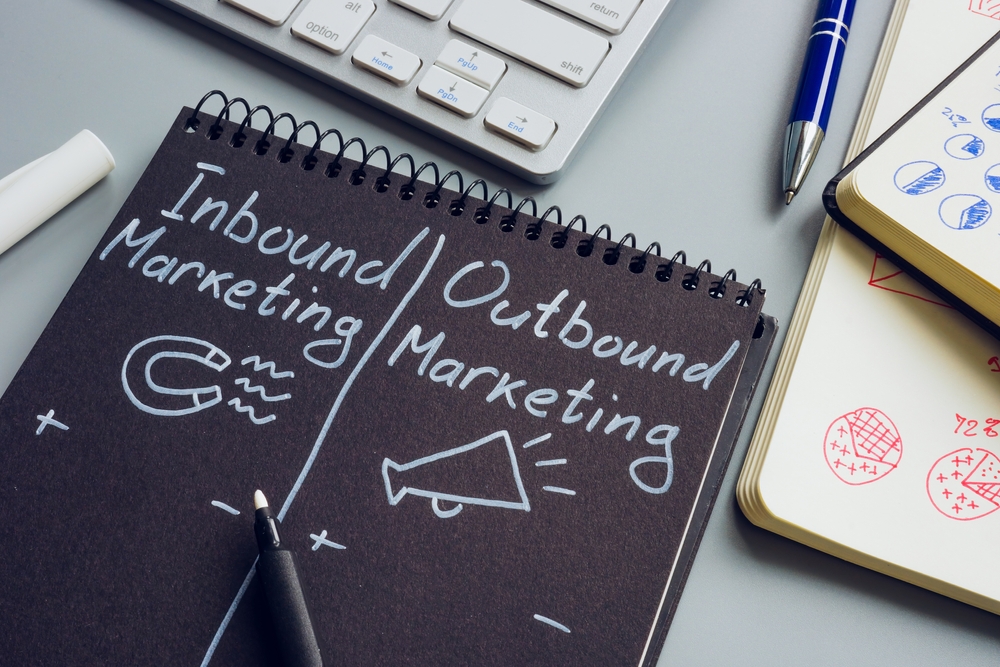
Leveraging Inbound and Outbound Strategies for Holistic B2B Lead Generation
A balanced approach combining inbound and outbound strategies is crucial for long-term B2B lead generation success. Both strategies serve unique purposes, and when integrated effectively, they create a comprehensive framework that maximizes lead acquisition and conversion rates.
Inbound Lead Generation: Attracting Prospects Organically
Inbound lead generation focuses on drawing prospects toward your business by providing valuable content, optimizing for search engines, and nurturing leads over time. This method relies on creating demand through educational and thought-leadership materials that position your company as an industry authority.
Key Inbound Channels
- Content Marketing
Well-crafted content helps establish authority and trust while addressing the pain points of your target audience.
Examples include:
- Blog articles optimized for long-tail keywords
- White papers and research reports
- Industry-specific case studies
- Interactive tools such as ROI calculators
- Search Engine Optimization (SEO)
Ranking highly on search engines increases organic traffic from prospects actively seeking solutions. SEO involves both on-page elements (keyword optimization, meta descriptions, and content structure) and off-page factors (link building and authority signals).
- Social Media Marketing
Platforms like LinkedIn offer opportunities to share content, engage with industry professionals, and promote thought leadership.
- Webinars and Virtual Events
These provide an interactive platform to discuss industry trends, educate prospects, and generate high-quality leads.
| Inbound Channel | Purpose | Key Metric |
| Blog Content | Drive organic traffic and educate prospects | Organic traffic, time on page |
| White Papers & Reports | Build authority and capture contact details | Downloads, lead conversions |
| Social Media Engagement | Foster relationships and boost visibility | Followers, engagement rate |
| SEO | Increase discoverability on search engines | SERP rankings, organic leads |
Best Practices for Inbound Lead Generation
- Optimize for Intent: Ensure that content targets specific stages of the buyer’s journey (awareness, consideration, and decision).
- Include Clear CTAs: Encourage readers to take action by offering downloadable resources, demos, or consultations.
- Nurture Leads with Email Drip Campaigns: Use marketing automation to deliver relevant content over time, building trust and keeping prospects engaged.
Outbound Lead Generation: Proactive Prospecting
Outbound lead generation involves reaching out directly to potential clients, often before they have expressed a specific interest. This approach allows businesses to target key decision-makers and generate leads faster than inbound methods alone.
Effective Outbound Techniques
- Cold Email Campaigns
Personalized outreach remains a cornerstone of outbound lead generation. Rather than generic mass emails, successful campaigns focus on tailored messaging that addresses specific pain points.
Cold Email Best Practices:
- Personalize the subject line and introduction.
- Keep messages concise and value-driven.
- End with a clear call to action (e.g., request a meeting, suggest a demo).
- Cold Calling
Though often viewed as outdated, cold calling remains effective in certain industries. When combined with prior research and personalization, it can open doors to high-value conversations.
- Account-Based Marketing (ABM)
ABM blends outbound efforts with deep personalization. It targets high-value accounts with tailored messaging and multi-channel outreach strategies.
- Social Selling
Engaging with prospects on platforms like LinkedIn helps establish rapport before making a direct pitch. Social selling involves liking, sharing, and commenting on prospects’ posts to build familiarity.
| Outbound Technique | Pros | Cons |
| Cold Email Campaigns | Scalable, low-cost outreach | Low response rates without personalization |
| Cold Calling | Immediate feedback and interaction | High rejection rate |
| Account-Based Marketing | High ROI for large deals | Resource-intensive |
| Social Selling | Builds trust and long-term relationships | Time-consuming |
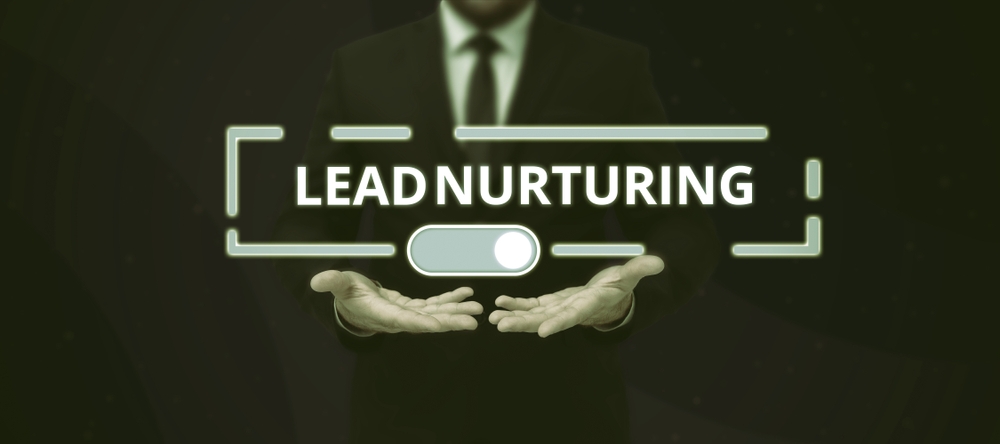
Enhancing Lead Nurturing with Marketing Automation
Effective lead nurturing is critical in B2B sales, where decision-making cycles are often long and involve multiple stakeholders. Marketing automation tools enable businesses to nurture leads consistently while maintaining a personalized touch.
Stages of Lead Nurturing
- Awareness Stage
At this stage, prospects are just becoming aware of a problem or opportunity. The goal is to educate them with valuable content.
Examples:
- Educational blog posts
- Introductory webinars
- Social media posts highlighting key industry trends
- Consideration Stage
Here, prospects are evaluating potential solutions. Your content should demonstrate how your product or service can address their needs.
Examples:
- Case studies
- Product comparison guides
- White papers
- Decision Stage
Prospects are now ready to make a decision. Provide content that reinforces trust and makes it easy for them to choose your solution.
Examples:
- Free trials or demos
- ROI calculators
- One-on-one consultations
Lead Qualification Framework: Ensuring Sales-Ready Leads
Effective B2B lead generation isn’t just about volume—it’s about quality. A robust lead qualification framework helps businesses prioritize leads most likely to convert, ensuring sales teams focus on high-value opportunities.
Key Lead Qualification Models
- BANT Model
The BANT model evaluates leads based on four key criteria:
- Budget: Does the lead have the financial resources to purchase?
- Authority: Is the lead a decision-maker or influencer?
- Need: Does the lead have a problem your solution can solve?
- Timing: Is the lead ready to make a purchase in the near term?
- CHAMP Model
CHAMP is similar to BANT but places greater emphasis on challenges:
- Challenges: What specific problems does the lead need to solve?
- Authority: Who will make the final decision?
- Money: Can they afford the solution?
- Prioritization: How urgent is the need?
| Model | Focus | Best Used For |
| BANT | Budget, authority, need, timing | General lead qualification |
| CHAMP | Challenges, authority, money, priority | Complex sales cycles with multiple stakeholders |
Strategies for Effective B2B Lead Generation
To navigate the evolving landscape of B2B lead generation, businesses should consider implementing the following strategies:
- Content Marketing: Developing high-quality, informative content that addresses the pain points and interests of your target audience can attract potential leads organically. This includes blogs, whitepapers, case studies, and webinars that showcase expertise and provide value.
- Search Engine Optimization (SEO): Optimizing your website and content for search engines enhances visibility, driving organic traffic from prospects actively seeking solutions in your industry. Effective SEO involves keyword research, on-page optimization, and building authoritative backlinks.
- Social Media Engagement: Active participation on relevant social media platforms allows businesses to engage with potential leads, share valuable content, and build relationships. Social media also offers targeted advertising opportunities to reach specific demographics.
- Email Marketing: Crafting personalized email campaigns that deliver relevant content to prospects can nurture leads through the sales funnel. Segmenting your email list based on factors such as industry, company size, and engagement level enhances the effectiveness of your outreach.
- Webinars and Virtual Events: Hosting online events provides a platform to demonstrate expertise, engage with a wider audience, and capture leads interested in your offerings. These events also facilitate real-time interaction, allowing for immediate feedback and engagement.
- Lead Nurturing: Implementing a structured lead nurturing process ensures that prospects receive timely and relevant follow-ups, keeping your brand top-of-mind and guiding them toward a purchasing decision. This involves automated workflows that deliver content tailored to the lead’s stage in the buyer’s journey.
- Leveraging AI for Lead Scoring: Utilizing AI-driven tools to assess and prioritize leads based on their likelihood to convert enables sales teams to focus efforts on high-potential prospects, improving efficiency and conversion rates.
- Implementing Account-Based Marketing (ABM): Adopting ABM strategies allows for the targeting of specific high-value accounts with personalized marketing efforts, increasing the chances of conversion and fostering long-term business relationships.
- Utilizing Predictive Analytics: Employing predictive analytics to anticipate market trends and buyer behaviors enables proactive engagement with potential leads, allowing businesses to stay ahead of the competition.
Enhancing Data Management Practices: Investing in robust data management systems ensures the accuracy and relevance of lead information, facilitating effective personalization and outreach efforts.
Core Lead Generation Metrics
| Metric | Definition | Goal |
| Lead Conversion Rate | Percentage of leads that become customers | Higher conversion indicates better targeting |
| Cost Per Lead (CPL) | Total cost of acquiring a single lead | Lower CPL improves ROI |
| Marketing Qualified Leads (MQLs) | Leads deemed ready for further engagement by the marketing team | Indicates the quality of inbound efforts |
| Sales Qualified Leads (SQLs) | Leads deemed ready for direct sales engagement | Ensures high-value opportunities for sales |
| Customer Acquisition Cost (CAC) | Total cost of acquiring a new customer | Lower CAC enhances profitability |
| Lifetime Value (LTV) | Projected revenue generated from a customer over their lifetime | Higher LTV means greater long-term ROI |
Emerging Trends and Innovations in B2B Lead Generation
To stay ahead in a constantly evolving market, businesses must adopt emerging trends and technologies that drive innovation in B2B lead generation.
AI-Powered Lead Scoring
Machine learning models can analyze historical data to predict which leads are most likely to convert, improving lead prioritization and sales efficiency.
Interactive Content for Engagement
Interactive content such as quizzes, assessments, and calculators increases engagement by allowing prospects to actively participate. This not only improves lead quality but also captures valuable data for segmentation.
Conversational Marketing
Real-time engagement through chatbots and live chat tools shortens the sales cycle by addressing prospect queries instantly and guiding them toward a decision.
Sustainability and Ethical Marketing
Increasingly, B2B buyers prefer to work with companies that demonstrate a commitment to sustainability and ethical business practices. Communicating these values effectively can serve as a differentiator in competitive markets.
Reach Marketing’s Comprehensive Approach
To meet the evolving needs of businesses, Reach Marketing offers a full suite of services designed to address every stage of the lead generation funnel. Their methodology combines data-driven insights, advanced technologies, and multi-channel engagement.
Core Components of Reach Marketing’s Strategy
- Data-Centric Targeting
Reach Marketing employs advanced data analytics to identify high-potential prospects. By segmenting audiences based on critical factors—such as industry, job title, and buying intent—their campaigns achieve higher accuracy and efficiency.
Key Targeting Criteria Include:
- Firmographics (company size, industry, revenue)
- Technographics (technology stack used by the prospect)
- Behavioral Data (website visits, content downloads, email engagement)
- Multi-Channel Outreach
A single-channel approach is no longer effective in today’s multi-touchpoint B2B environment. Reach Marketing leverages various channels to ensure comprehensive engagement:
| Channel | Purpose |
| Email Marketing | Personalized, scalable outreach to nurture leads through the funnel. |
| Content Marketing | High-value content establishes thought leadership and attracts potential clients. |
| Social Media | Platforms like LinkedIn enable direct interaction with decision-makers and influencers. |
| Search Engine Optimization (SEO) | Organic search rankings drive inbound traffic from prospects actively seeking solutions. |
| Paid Advertising | PPC campaigns capture intent-driven leads quickly. |
Why Multi-Channel Matters
- Diversifies Lead Sources: Reduces dependence on a single platform.
- Increases Brand Visibility: Prospects encounter the brand across different touchpoints.
- Improves Conversion Rates: Multiple interactions reinforce trust and improve the likelihood of conversion.










